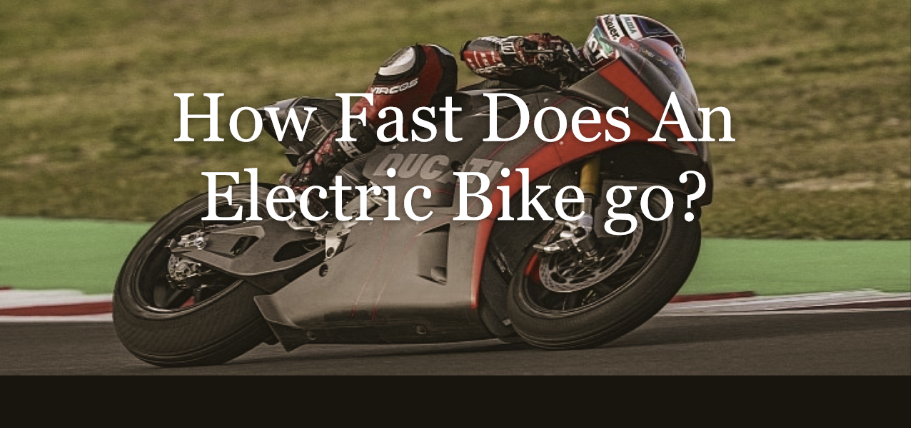How Fast Does An Electric Bike Go?

Electric bikes, popularly referred to as e-bikes, have grown in prominence in recent years, with several factors contributing to their increasing popularity. Environmental concerns, congestion in urban areas, advances in technology, and a greater focus on healthy lifestyles are driving more people to embrace these innovative transportation modes. However, one of the most commonly asked questions by potential buyers and enthusiasts alike is, “How fast does an electric bike go?” This article will delve into the dynamics of speed as it relates to electric bikes.
To begin, it’s vital to understand that the speed of an e-bike depends on several factors such as its motor power, battery capacity, bike weight, rider weight, terrain, and whether or not the rider is pedaling. Nonetheless, as per the regulations imposed in several countries, most commercially available electric bikes can reach a maximum speed of around 15.5 mph (25 kph) to 28 mph (45 kph). This speed limit is intentionally implemented for safety reasons and to classify e-bikes separately from motor vehicles.
The Impact on Speed Based on Classification
Different classifications of e-bikes have different speed limits. These classifications often depend on the power of the motor and whether the bike requires pedaling to engage the motor.
- Class 1 Electric Bikes: These are pedal-assist bikes with no throttle, and the motor provides assistance only when the rider is pedaling. The assistance stops when the bike reaches a speed of 20 mph (32 kph).
- Class 2 Electric Bikes: These e-bikes come with a throttle that can propel the bike without the need for pedaling. However, they too have a maximum assisted speed of 20 mph (32 kph).
- Class 3 Electric Bikes: These are pedal-assist bikes, similar to Class 1, but the motor continues providing assistance up to a speed of 28 mph (45 kph), at which point it disengages.
Components That Influence E-Bike Speed
Motor Power:
The motor is the heart of an e-bike and plays a significant role in determining its speed. E-bike motors typically range between 250W and 750W. Higher wattage generally means more power, enabling the bike to attain higher speeds.
Battery Capacity:
A higher capacity battery doesn’t directly influence the speed of an e-bike, but it does affect the duration for which the bike can maintain its top speed. A bigger battery will provide more range, allowing for longer rides at maximum power.
Weight:
The weight of the e-bike and rider significantly affects the maximum speed. Heavier loads require more power to move, meaning a heavier bike or rider may lead to reduced speed, especially uphill.
Terrain:
Riding on flat terrain allows for maintaining higher speeds easier than uphill riding. The motor needs to work harder against gravity when going uphill, thereby reducing the maximum attainable speed.
Increasing Your E-Bike’s Speed
While there are regulations on the speed of e-bikes, enthusiasts often seek ways to enhance their speed further. There are several ways this can be done, although some may be against the rules set by local authorities or potentially void the manufacturer’s warranty, so caution is recommended.
De-restricting Your E-bike:
Some e-bikes have speed limiters that restrict the maximum speed to adhere to local laws. Removing or adjusting these limiters can potentially increase the top speed.
Upgrading the Motor:
A more powerful motor can provide more speed, though this is a more technically complex and costly method of increasing an e-bike’s speed.
Reducing Weight:
A lighter bike requires less power to move, so reducing weight can improve speed. This could involve switching to lighter components or simply carrying less gear on your rides.
Improved Fitness:
For pedal-assist e-bikes, the rider’s fitness level plays a part in determining speed. The more power you can contribute through pedaling, the faster you’ll go.
Responsible Speed Management
Despite the potential to enhance an e-bike’s speed, it’s crucial to consider safety and legality. The speed limits are in place for a reason, primarily to prevent accidents and ensure e-bikes can be ridden in bike lanes without posing a risk to other cyclists or pedestrians. Before attempting to increase your e-bike’s speed, it’s important to check your local laws and understand the potential risks.
In-depth Look into the Role of Each Component
Motor Type: The type of motor an e-bike uses also impacts its speed. There are two types of e-bike motors: hub motors and mid-drive motors. Hub motors are generally more affordable and quieter, but they offer less torque, which can impact acceleration and climbing steep inclines. Mid-drive motors, on the other hand, are known for better performance and more torque, leading to greater acceleration and a higher potential speed.
Gearing System:
The gearing system of an e-bike can significantly influence the speed. Bikes with more gears provide a wider range of speed options, allowing the rider to choose the most efficient gear for their current situation. A more efficient gear allows the rider and motor to work together effectively, increasing the speed of the e-bike.
Battery Voltage:
Just like battery capacity, battery voltage plays a crucial role in determining an e-bike’s speed. A higher voltage battery can deliver more power to the motor, thereby allowing it to run faster. That being said, a higher voltage might lead to quicker battery drainage.
The Role of Aerodynamics:
Aerodynamics plays a part in the speed of all vehicles, and e-bikes are no exception. The shape and design of the e-bike, along with the rider’s position, can influence wind resistance. Bikes are designed with aerodynamics in mind and riders who adopt a more streamlined position can achieve higher speeds due to decreased wind resistance.
Expanding E-bike Speeds: The Future
With advancements in technology and the increasing popularity of e-bikes, the prospects for higher speeds are on the horizon. We can expect to see lighter and more efficient batteries, stronger and more compact motors, and even smarter biking systems that adjust the motor’s output based on riding conditions. However, these advancements will always need to be balanced with safety and legal considerations.
Understanding E-bike Speeds in Different Regions
E-bike regulations and speed limits vary across the globe. For instance, in the European Union, the limit for pedal-assist e-bikes is 25 kph (15.5 mph). In contrast, in the United States, the limit is often higher, ranging from 20 mph (32 kph) to 28 mph (45 kph), depending on the bike’s classification.
In countries like Australia and New Zealand, the maximum power output of e-bikes is limited to 200W and 300W, respectively, and this also affects the maximum speed. It’s always essential to familiarize yourself with local regulations before purchasing or modifying an e-bike to ensure compliance with the law.
Conclusion: How Fast Does An Electric Bike Go?
In conclusion, while electric bikes offer a significantly higher speed than traditional bicycles, their speed is often capped for safety reasons. However, various factors can influence how fast an e-bike can go, including motor power, battery capacity, weight, and terrain. Riders looking for ways to increase their e-bike’s speed should be aware of the legal and safety implications. As electric bike technology continues to evolve, it will be interesting to see how these speed dynamics change in the coming years.
